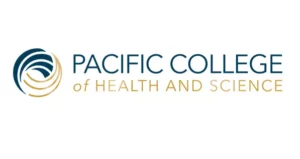The acronym ‘CAM’ stands for Complementary and Alternative Medicine. CAM is a group of diverse medical and health care systems, practices, and products that include treatments such as herbal remedies, naturopathy, acupuncture, and meditation. CAM is currently not considered to be a part of conventional medicine, and because of this, it is not covered by all health care providers. However, CAM is becoming increasingly popular and accepted by the medical community and many hospitals are beginning to include these alternative services. Helping the public to become more aware of the benefits CAM can offer is the first step to improving its availability for patients in need.
To help spread the word, The National Center for Complementary and Alternative Medicine (NCCAM), which is part of the National Institutes of Health (NIH), has launched Time to Talk. Time to Talk is an educational campaign to encourage patients – particularly those age 50 or older — and their health care providers to openly discuss the use of complementary and alternative medicine (CAM). The National Institutes of Health (NIH) — The Nation’s Medical Research Agency — includes 27 Institutes and Centers and is a component of the U.S. Department of Health and Human Services.
NCCAM’s Time to Talk Campaign
As evidence for CAM’s popularity, a consumer survey recently conducted by NCCAM and AARP showed that almost two-thirds of people age 50 or older is using some form of CAM. The only problem is that less than one-third of these CAM users talk about it with their providers. An increase in the discussion of CAM between patients and practitioners can lead to an increase in the availability of CAM.
If you think a career in holistic medicine is something you would like to pursue, contact us and speak to an admissions representative to get started on your new journey!
Encouraging Communication Between Patients and Healthcare Providers
According to the NCCAM/AARP survey, some of the reasons why this
doctor-patient dialogue about CAM does not occur includes reasons such as the physician never asked about the patients treatments outside of their records, the patient did not know they should discuss CAM, and that the doctor’s visit was too short for such a talk. More than one-half of respondents who had talked about CAM with their physician said they (not their physician) initiated the CAM discussion.
The Time to Talk campaign is aimed at addressing the need for this
dialogue to help ensure safe, coordinated care among all conventional and
CAM therapies. Talking not only allows integrated care, it also minimizes risks of interactions with a patient’s conventional treatments. When patients tell their providers about their CAM use, they can more effectively manage their health. When providers ask their patients about CAM use, they can ensure that they are fully informed and can help patients make wise health care decisions.
Tips for Patients and Providers to Discuss CAM
Patients are encouraged to fully complete patient history forms, making sure to include all therapies and treatments used. Making a list in advance may be helpful. The patient should tell the health care provider about all therapies or treatments used, including over-the-counter, dietary, or herbal supplements. Asking questions about a certain CAM therapy can also be a great introduction to the discussion of complementary medicine with one’s physician. By actively discussing and combining the best of Western medicine with an interest and appreciation for Eastern remedies, optimal health can not only be achieved, but can be better introduced to coverage by health care providers and the attention of Western physicians.
Featured Posts:

